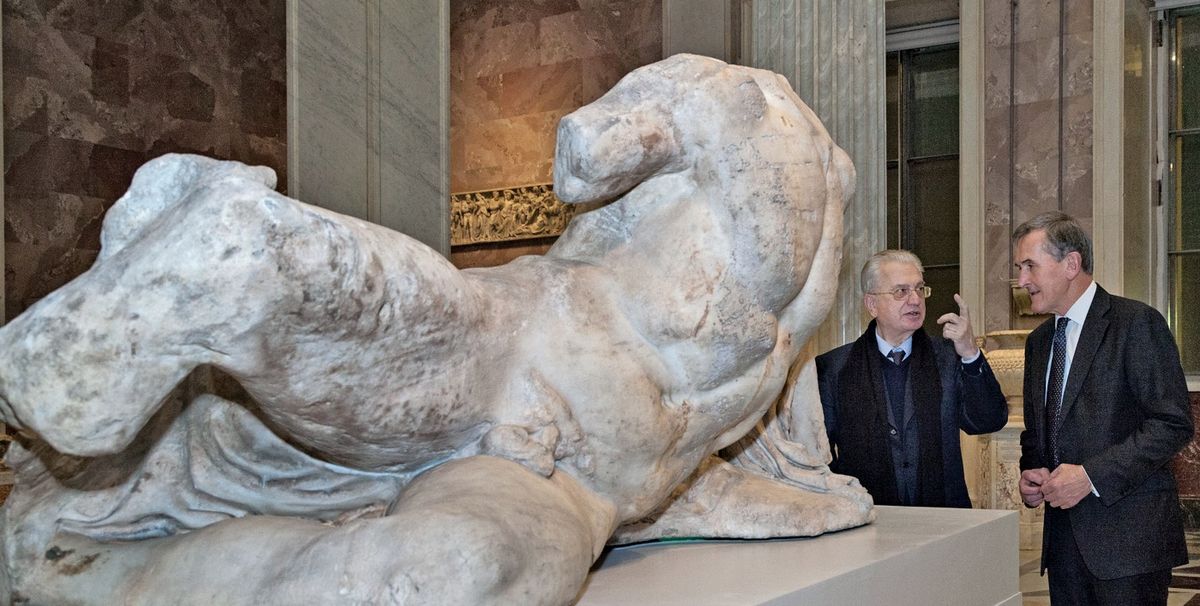The British Museum has received only a single request to borrow one of the Parthenon Marbles since the sensational loan of a sculpture to Russia in December 2014. The pediment sculpture of the river god Ilissos (around 438-432BC) was lent for six weeks to the State Hermitage Museum in St Petersburg, where it was seen by 136,000 visitors. It was the first time that any of the Parthenon Marbles had left the British Museum since arriving in London in 1807.
Neil MacGregor, who masterminded the Russian loan when director of the British Museum, had suggested a few years earlier that the Marbles might eventually be lent to venues in China and Africa. Asked in a debate in 2009 about returning the Parthenon sculptures to Greece, MacGregor responded: “The real question is about how the Greek and British governments can work together so that the sculptures can be seen in China and Africa.”
But following the 2014 loan to Russia, the museum has received just one formal request to borrow the sculptures—from Amsterdam’s Nieuwe Kerk, a Golden Age church now used as an exhibition venue, which asked to borrow Ilissos for a display earlier this year. The request was turned down for reasons that have not been disclosed.
There had also been three informal approaches from museums to borrow individual Marbles, but none led to formal requests, presumably because the British Museum indicated they would be unlikely to be successful. Museums in Greece, which has long claimed the Marbles, have not requested loans, since that would mean acknowledging the British Museum’s ownership. Nevertheless, it comes as a surprise that other international museums, such as New York’s Metropolitan Museum of Art or the Louvre in Paris, have not done so. Even more surprisingly, no UK museum has submitted a formal request.
After the loan of Ilissos to the Hermitage, a British Museum spokeswoman said that “the trustees will consider any request for any part of the collection to be borrowed subject to the usual considerations on condition”, and providing the borrower “can guarantee its safe return”. Around 20 of the 87 Marbles were deemed fit enough to travel on conservation grounds.


